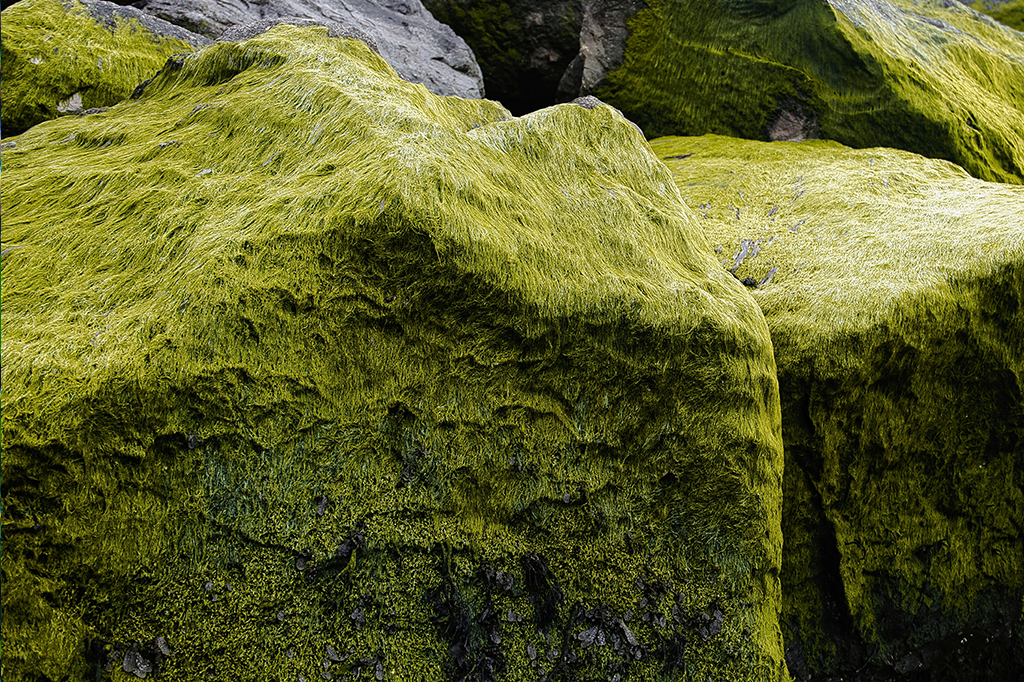Whether you’re a novice aquascaper or a seasoned enthusiast, understanding these principles is key to creating harmonious and visually stunning aquatic environments. In this series we unravel the secrets behind balance, focal points, color theory, and more.

THIS IS PART 1 OF THE ‘PRINCIPLES OF AQUASCAPING’ SERIES. CHECK OUT THE OTHER PARTS HERE:
Balance
Creating a harmonious and visually pleasing aquascape requires a careful consideration of balance among the diverse elements within your aquarium. This artful practice involves not only the strategic placement of rocks, plants, and decorations but also an acute awareness of their visual weight. Achieving equilibrium in the arrangement ensures that no single element dominates the overall aesthetic, fostering a sense of cohesion and tranquility in the aquatic environment.
Balancing elements in aquascaping goes beyond just distributing weight evenly; it entails a thoughtful arrangement that complements the overall design. Whether you opt for symmetrical balance, where elements are mirrored on either side, or asymmetrical balance, where varying elements are strategically placed to create visual interest, the goal is to establish a sense of unity.
Consider the size, shape, and color of each component, as they contribute to the visual impact of the aquascape. Proportionality plays a crucial role, ensuring that no single element overwhelms the others. By carefully selecting and placing rocks, plants, and decorations, you can guide the viewer’s gaze through the aquarium, creating an engaging and well-balanced composition.
Additionally, the concept of balance extends to the dynamic interplay between open spaces and densely planted areas. Creating depth in the aquascape not only adds visual interest but also contributes to the overall equilibrium. Striking a balance between negative space and intricate details allows for a more immersive and aesthetically pleasing underwater landscape.

Contrast
Balancing elements in aquascaping goes beyond just distributing weight evenly; it entails a thoughtful arrangement that complements the overall design. Whether you opt for symmetrical balance, where elements are mirrored on either side, or asymmetrical balance, where varying elements are strategically placed to create visual interest, the goal is to establish a sense of unity.
Consider the size, shape, and color of each component, as they contribute to the visual impact of the aquascape. Proportionality plays a crucial role, ensuring that no single element overwhelms the others. By carefully selecting and placing rocks, plants, and decorations, you can guide the viewer’s gaze through the aquarium, creating an engaging and well-balanced composition.
Additionally, the concept of balance extends to the dynamic interplay between open spaces and densely planted areas. Creating depth in the aquascape not only adds visual interest but also contributes to the overall equilibrium. Striking a balance between negative space and intricate details allows for a more immersive and aesthetically pleasing underwater landscape.

SHADOW– by BACHRUM
Proportion
Proportion plays a pivotal role in crafting a visually appealing and well-balanced aquascape. It involves a thoughtful consideration of the size and scale of both your aquarium and the various elements it houses. By carefully managing these proportions, you can create a harmonious and aesthetically pleasing underwater environment.
Start by evaluating the size of your tank. Larger aquariums offer more space for intricate designs and the inclusion of a diverse range of plants and decorations. Smaller tanks, on the other hand, require a more judicious selection of elements to prevent overcrowding and maintain a proportional arrangement.
Once you’ve assessed the overall size of the aquarium, turn your attention to the specific elements within it. Rocks, plants, driftwood, and other decorations should be chosen with the tank’s dimensions in mind. Consider the growth potential of plants and the eventual size of decorative elements, ensuring they complement rather than overwhelm the space.

奇幻森林(20.7L) by – Leung Chung Hin
Depth & Perspective / Forced Perspective
Enhancing the visual depth of your aquascape is a captivating aspect of aquascaping, and it can be achieved through the strategic application of depth and perspective techniques, particularly employing forced perspective. By skillfully placing larger objects in the foreground and gradually introducing smaller elements toward the background, you can create an optical illusion that not only adds dimension but also imparts a sense of expansiveness to your aquarium.
The concept of forced perspective involves manipulating visual cues to deceive the viewer’s perception of size and distance. In the context of aquascaping, this technique allows you to make your aquarium appear more extensive than its actual dimensions. The larger elements in the foreground command attention, drawing the viewer’s focus, while the progressively smaller objects towards the background contribute to the illusion of distance.
Consider incorporating rocks, driftwood, or other substantial elements at the front of the aquarium to establish a compelling foreground. As the eye moves toward the back, introduce smaller plants or decorations. This deliberate arrangement not only mimics the natural progression of elements in a landscape but also guides the observer’s gaze into the depth of the tank.
Furthermore, thoughtful placement of substrate, varying in depth from front to back, can enhance the illusion of a gradual receding terrain. This technique adds another layer of authenticity to the forced perspective, contributing to the overall immersive experience.

Kūpinaʻi o ka Pali (Echo of the Pali)– by Steven Chong
Rule of Thirds & The Golden Rule
The Rule of Thirds and its counterpart, the Golden Rule, represent foundational principles in the creation of visually appealing compositions, a concept ingrained in artistic endeavors since the earliest expressions of human creativity. Grounded in the understanding of human perception, these principles leverage the innate attraction of the human eye to balanced arrangements.
The Rule of Thirds involves dividing an image or scene into a grid of nine equal parts by two horizontal and two vertical lines, creating four intersecting points. These points serve as strategic focal areas, and placing key elements along these lines or intersections enhances the overall balance and visual interest of the composition. This principle guides the observer’s gaze systematically through the image, facilitating a more dynamic and harmonious viewing experience.
Similarly, the Golden Rule, also known as the Golden Ratio or Divine Proportion, is a mathematical concept that manifests in aesthetics and nature. This ratio, approximately 1.618, is often found in naturally occurring patterns and has been historically revered for its aesthetic qualities. Applying the Golden Rule in aquascaping involves arranging elements in proportions that resonate with this ratio, contributing to a sense of balance and aesthetic appeal.
Both principles share the underlying philosophy that certain placements within a visual field are inherently more appealing to the human eye. By aligning key elements, such as plants, rocks, or focal points, with the lines and intersections dictated by these principles, aquascapers can achieve compositions that are not only balanced but also visually captivating.
Embracing the Rule of Thirds and the Golden Rule in aquascaping goes beyond mere technical guidelines; it represents a nuanced understanding of visual aesthetics. As you embark on your aquascaping journey, integrating these principles into your design philosophy can elevate your creations, resulting in aquariums that resonate with a timeless and universally appreciated sense of visual harmony.

The hole– by Juan fco aba serra





Leave a Reply